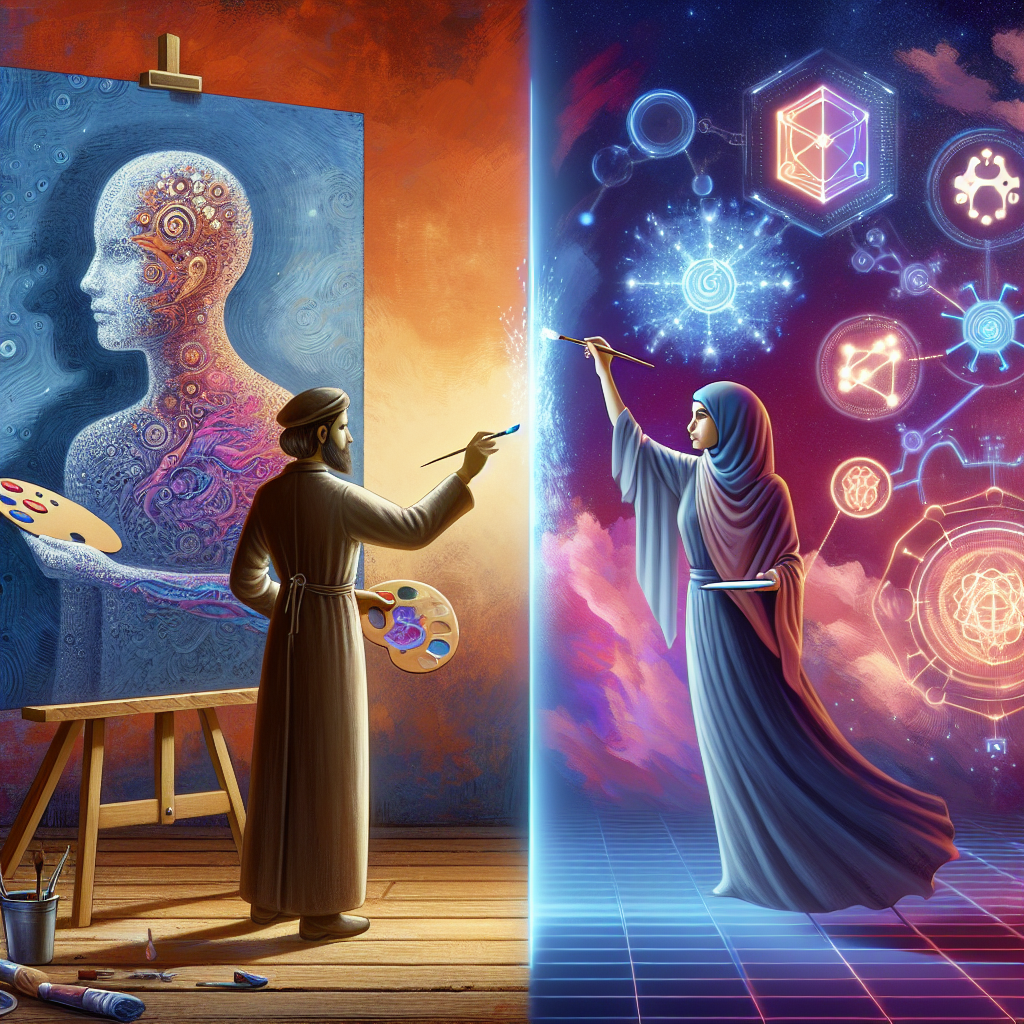The art realm has consistently thrived on innovation, continually pushing the limits of expression through diverse mediums. In contemporary times, a significant force is revolutionizing the creative landscape—Generative AI. This technology transcends mere utility; it stands as a nascent artist in its own right, enriching the creative process with previously unimaginable possibilities. This article delves into the profound ways Generative AI is reshaping the art world, from generating new artworks to redefining artistic roles.
Grasping Generative AI
Generative AI involves algorithms that can produce new content—whether visual art, music, or written text—by learning from existing datasets. These systems evaluate extensive datasets to uncover patterns and create unique outputs that emulate or blend styles, genres, and forms. Innovations such as OpenAI’s DALL-E and Google’s DeepDream have emerged, allowing both artists and amateurs to tap into the capabilities of this technology.
Broadening Creative Horizons
Generative AI has the ability to widen the dimensions of human creativity. Artists are increasingly partnering with AI to discover new avenues of expression. With AI’s assistance, creators can design intricate visuals, conceptualize ideas at an unparalleled scale, and draw from a wide spectrum of styles.
For example, visual artists are employing generative algorithms to craft stunning works that surpass traditional confines. This melding of human creativity and machine learning challenges established concepts of authorship, as these artworks often result from a collaborative dialogue between the artist and AI.
Removing Barriers to Entry
Generative AI significantly reduces barriers to entry in the art sector. Traditionally, engaging in art creation required skill mastery, costly materials, or formal education. Today, individuals can embark on artistic endeavors without conventional qualifications, utilizing AI tools that inspire creativity through straightforward prompts or user-friendly interfaces.
This democratization enables a broader spectrum of individuals to contribute to the artistic community, enriching the modern art landscape with diverse voices and perspectives. From aspiring creators to casual hobbyists, anyone can utilize Generative AI to bring their visions to life.
Challenges and Ethical Considerations
As with any groundbreaking technology, the advent of Generative AI in art presents significant ethical dilemmas. Who holds the rights to an artwork produced by AI? Is the creator the individual who inputs parameters, or is it the AI itself? These inquiries challenge established ideas of authorship and intellectual property, sparking discussions about attribution and remuneration.
Furthermore, the use of AI algorithms can perpetuate biases found within their training datasets. If the data lacks diversity, the artworks generated may mirror and reinforce existing stereotypes. It is crucial for artists and technologists to collaborate, ensuring these systems are trained on a wide and inclusive range of inputs.
The Future of Art and AI
The relationship between Generative AI and the art world is still in its early stages, but its potential effects are profound. As the technology evolves, we can expect more intricate collaborations between artists and AI, encompassing interactive installations, immersive experiences, and multi-dimensional storytelling. The combination of human intuition with machine processing may spawn new art forms that defy classification.
Furthermore, institutions and galleries are starting to welcome AI-generated art, with exhibitions highlighting works created by these algorithms. As audiences become more accustomed to this genre, a broader acceptance of AI as a credible creative partner is likely to ensue.
Conclusion
Generative AI is transforming the art world in ways that challenge our perceptions of creativity and authorship. By broadening access to artistic expression and encouraging collaboration between humans and machines, this technology is redefining not just how art is made, but also who is empowered to create it. As we navigate the intricacies of this emerging landscape, the conversation between tradition and innovation will sculpt the future of art in exhilarating and unforeseen ways. Embracing Generative AI may very well unlock the door to the next renaissance in creative expression.

